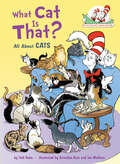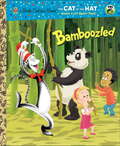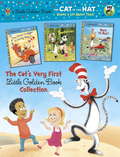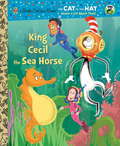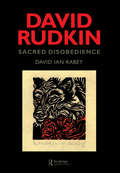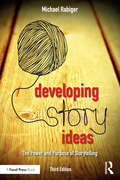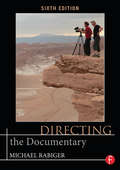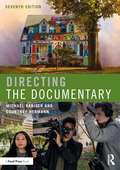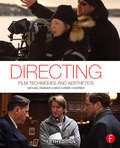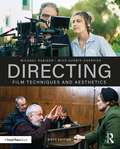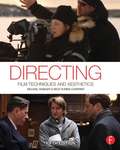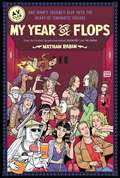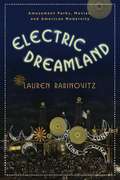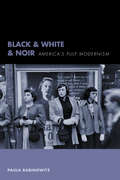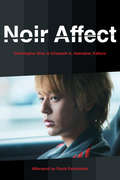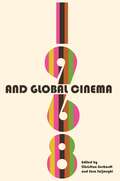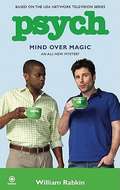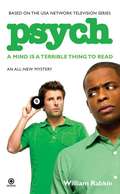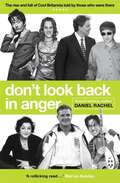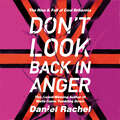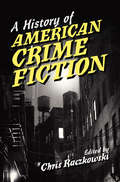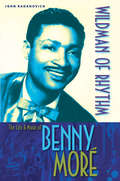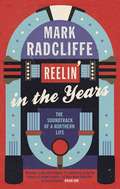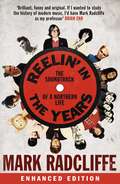- Table View
- List View
What Cat Is That?: All About Cats (Cat in the Hat's Learning Library)
by Tish RabeThe Cat in the Hat learns all about cats—wild and domestic—in this feline-focused Cat in the Hat's Learning Library book! Traveling aboard his Kitty-Cat-Copter, the Cat takes Sally and Nick to meet lions in Kenya, tigers in Bangkok, Siamese down the block—learning along the way those traits that all cats share: scratchy tongues, padded paws, sensitive wiskers, sharp claws, and those things unique to different species. With information about the anatomy and behavior of well-known species and breeds—including lions, tigers, leopards, cheetah, jaguar, ocelots, cougar, American shorthair, Persian, Siamese—and lesser-known ones, like clouded leopards, caracals, Turkish Vans, Scottish folds, American curls, Raga Muffins, and more—there's something here for cat/Cat lovers of all kinds! Fans of the hit PBS Kids show The Cat in the Hat Knows a Lot About That! (which is based on the Cat in the Hat's Learning Library) won't want to miss this purrfect new addition to the series.
Bamboozled (Little Golden Book)
by Tish Rabe Christopher MoroneySally's stuffed bear Pammy the Panda is turning two, and Sally wants to give her a gift. But what kind of things do pandas like? Enter the Cat in the Hat. His friend Zhu Zhu is a real panda--he's bound to have some suggestions! So off the gang goes to Bamwamabooboo, where Zhu Zhu teaches them about his favorite thing in the world: bamboo! Turns out that bamboo is not only a panda's favorite food, but it's an amazingly strong, lightweight, and flexible kind of grass--like the stuff on your lawn--that's good for building all sorts of things that humans like, too. Almost as much as they like a bargain--like a $3.99 Little Golden Book!
The Cat's Very First Little Golden Book Collection (CITH Knows a Lot About That)
by Tish Rabe Christopher MoroneyFeaturing three Little Golden Books based on the hit PBS Kids' TV show The Cat in the Hat Knows a Lot About That!, this omnibus makes an ideal gift for holidays, birthdays, and happy occasions of all kinds. In The Thinga-ma-jigger Is Coming Today!, readers are introduced to the cast of the TV show; in Bamboozled, the Cat and Co. visit with a panda and learn about its favorite food (bamboo); and in Born to Run, the gang go swimming upstream with a spawning salmon. Perfect for new viewers of the show--as well as die-hard fans--this is a seasonless gift that will keep on giving!
King Cecil the Sea Horse (Little Golden Book)
by Tish Rabe Christopher MoroneyWhen Sally and Nick need to learn about babysitting, the Cat in the Hat takes them to meet an expert: King Cecil the Seahorse! That's because when it comes to having babies, seahorses give birth in a very special way. The mom seahorse puts her eggs into a pouch on the dad, and he carries them there until the babies hatch (in his pouch) and swim out! Perfect for summer reading, nights with the babysitter, Father's Day--any day, really. This Little Golden Book based on an episode of the hit PBS Kids' TV show The Cat in the Hat Know a Lot About That! will keep kids laughing, teach them about a very unique animal, and even inspire conversations about gender roles!
David Rudkin: An Expository Study of his Drama 1959-1994
by David Ian Rabey David I. RabeyDr. Rabey's profound critical study of David Rudkin's drama constitutes an in-depth evaluation of this unique dramatist, re-assessed in the light of his bi-sexuality and Anglo-Irish origins. This key study includes insights from noted performers of Rudkin's work, including Ian Hogg, Peter McEnery, Ian McDiarmid, Gerard Murphy, and Charlotte Cornwell. It is a fully authorized study with exclusive reference to archival material which includes some frank and urgent interview contributions from the dramatist himself, who is usually deemed reclusive. It is enhanced by Dr. Rabey's own experience of Wales, Ireland, and the English Black Country for his exposition of Rudkin's mythic sense of Celtic and Mercian history.
Developing Story Ideas: The Power and Purpose of Storytelling
by Michael RabigerThe vast majority of screenplay and writing books that focus on story development have little to say about the initial concept that inspired the piece. Developing Story Ideas: The Power and Purpose of Storytelling, Third Edition provides writers with ideational tools and resources to generate a wide variety of stories in a broad range of forms. Celebrated filmmaker and author Michael Rabiger demonstrates how to observe situations and themes in the writer's own life experience, and use these as the basis for original storytelling. This new edition has been updated with chapters on adaptation, improvisation, and cast collaboration's roles in story construction, as well as a companion website featuring further projects, class assignments, instructor resources, and more. Gain the practical tools and resources you need to spark your creativity and generate a wide variety of stories in a broad range of forms, including screenplays, documentaries, novels, short stories, and plays Through hands-on, step-by-step exercises and group and individual assignments, learn to use situations and themes from your own life experience, dreams, myth, and the news as the basis for character-driven storytelling; harness methods of screenplay format, dialogue, plot structure, and character development that will allow your stories to reach their fullest potential
Directing the Documentary
by Michael RabigerDirecting the Documentary, Sixth Edition is the definitive book on the form, offering time-tested principles to help you master the craft. Ideal for documentary courses as well as aspiring and established documentary filmmakers, this book has it all, with in-depth lessons and insider perspectives on every aspect of preproduction, production, and postproduction. Focusing on the hands-on work needed to make your concept a reality, this new edition covers it all, from the fundamental to advanced elements of directing and more. It includes dozens of projects, practical exercises, and thought-provoking questions, and provides best practices for researching and honing your documentary idea, developing a crew, guiding your team, maintaining control throughout the shoot, and much more. This new edition features: A two-stage cinematic learning process: camera observation skills, then advanced storytelling Dozens of real-world exercises and case studies to demystify production processes and enhance your skills Easy-to-comprehend guidance in the creative, technical, and artistic aspects of directing Fresh coverage of the latest filmmaking technology Expanded sections on grant writing and fundraising, emphasizing proposal and pitching skills A self-assessment of your interviewing skills and expanded coverage of narration-writing A companion website (www.directingthedocumentary.com) that includes handy production checklists and forms, updated projects, exercises, and video examples In Directing the Documentary, Sixth Edition Michael Rabiger combines expert advice on the storytelling process and technical aspects of documentary filmmaking with sound commentary on the philosophical underpinnings of the art, providing the practical and holistic understanding you need to become a highly-regarded, original, and ethical contributor to the genre.
Directing the Documentary
by Michael Rabiger Courtney HermannDirecting the Documentary is the definitive book on the documentary form, that will allow you to master the craft of documentary filmmaking. Focusing on the hands-on work needed to make your concept a reality, it covers the documentary filmmaking process from top to bottom, providing in-depth lessons on every aspect of preproduction, production, and postproduction. The book includes dozens of projects, practical exercises, and thought-provoking questions, and offers best practices for researching and honing your documentary idea, developing a crew, guiding your team, and much more. This fully revised and updated 7th edition also includes brand new content on the rise of the documentary series, the impact of video on-demand and content aggregators, updated information on prosumer and professional video (including 4K+), coverage of new audio & lighting solutions and trends in post-production, coverage of the immersive documentary, and provides practical sets of solutions for low, medium, and high budget documentary film productions throughout. The companion website has also been fully updated to a variety of new projects and forms. By combining expert advice on the storytelling process, the technical aspects of filmmaking and commentary on the philosophical underpinnings of the art, this book provides the practical and holistic understanding you need to become a highly regarded, original, and ethical contributor to the genre. Ideal for both aspiring and established documentary filmmakers, this book has it all.
Directing: Film Techniques and Aesthetics
by Michael Rabiger Mick Hurbis-CherrierThis comprehensive manual has inspired tens of thousands of readers worldwide to realize their artistic vision and produce well-constructed films. Filled with practical advice on every stage of production, this is the book you will return to throughout your career. Directing covers the methods, technologies, thought processes, and judgments that a director must use throughout the fascinating process of making a film. The core of the book is the human, psychological, and technical knowledge that every director needs, the enduring elements of the craft that remain vital. Directing also provides an unusually clear view of the artistic process, particularly in working with actors and principle crew to achieve personally expressive storytelling and professionalism on any budget. Directing explores in detailed and applicable terms how to engage with the conceptual and authorial sides of filmmaking. Its eminently practical tools and exercises show how to: discover your artistic identity; develop credible and compelling stories with your cast and crew; and become a storyteller with a distinctive voice and style. The companion website includes teaching notes, dozens of practical hands-on projects and film study activities to help you master technical and conceptual skills, film analysis questionnaires, and all the essential production forms and logs. New to the fifth edition * Virtually every chapter has been revised, updated, and re-organized for a streamlined and integrated approach. * Expanded sections on the basics of drama, including thorough analyses of recent films * Discussions of the director's approach to script analysis and development * New discussion exploring the elements of naturalistic and stylistic aesthetic approaches. * New discussion on the narrative power of lighting and the lens - including many recent film examples for shot size, perspective, focus and exposure * Greater emphasis on the implications of composition, mise-en-scène, continuity shooting and editing, long take shooting, point-of-view sequences, and camera handling * Expanded discussion of collaboration between the director and principle creative crew * Updated coverage of workflow and comparative advantages to digital or film acquisition * New section on film production safety, set protocol and etiquette
Directing: Film Techniques and Aesthetics
by Michael Rabiger Mick Hurbis-CherrierDirecting: Film Techniques and Aesthetics is a comprehensive exploration into the art and craft of directing for film and television. It’s filled with practical advice, essential technical information, and inspiring case studies for every stage of production. This book covers the methods, technologies, thought processes, and judgments that a director must use throughout the fascinating process of making a film, and concentrates on developing the human aspects of cinema to connect with audiences.The fully revised and updated 6th edition features new sections on using improvisation, the development of characters for long form television series, visual design, the role of the digital imaging technician, film promotion and distribution, alongside expanded information on contemporary color grading tools, stylistic approaches and genre, workflows, blocking scenes for the camera and more. The book emphasizes independent and short form cinema which allows cutting-edge creativity and professionalism on shoestring budgets. Recognizing that you learn best by doing, it includes dozens of practical hands-on projects and activities to help you master technical and conceptual skills. Just as important as surmounting technological hurdles is the conceptual and authorial side of filmmaking. This book provides an unusually clear view of the artistic process, particularly in working with actors and principle crew members. It offers eminently practical tools and exercises to help you develop your artistic identity, find credible and compelling stories, choose and work with your cast and hone your narrative skills. Directing shows you how to surpass mere technical proficiency and become a storyteller with a distinctive voice and style. The accompanying companion website includes film analysis exercises, shooting projects, checklists and assignment forms, analytical questionnaires, updated production forms and logs for all phases of a project with links to additional resources and set safety advice.
Directing: Film Techniques and Aesthetics (Fifth Edition)
by Michael Rabiger Mick Hurbis-CherrierThe book is full of practical advice on every stage of production, that covers human, psychological, and technical knowledge that every director needs in the fascinating process of film-making.
My Year of Flops
by Nathan Rabin A. V. ClubIn 2007, Nathan Rabin set out to provide a revisionist look at the history of cinematic failure on a weekly basis. What began as a solitary ramble through the nooks and crannies of pop culture evolved into a way of life. My Year Of Flops collects dozens of the best-loved entries from the A.V. Club column along with bonus interviews and fifteen brand-new entries covering everything from notorious flops like The Cable Guy and Last Action Hero to bizarre obscurities like Glory Road, Johnny Cash's poignantly homemade tribute to Jesus. Driven by a unique combination of sympathy and Schadenfreude, My Year Of Flops is an unforgettable tribute to cinematic losers, beautiful and otherwise.
Electric Dreamland: Amusement Parks, Movies, and American Modernity (Film and Culture Series)
by Lauren RabinovitzAmusement parks were the playgrounds of the working class in the early twentieth century, combining numerous, mechanically-based spectacles into one unique, modern cultural phenomenon. Lauren Rabinovitz describes the urban modernity engendered by these parks and their media, encouraging ordinary individuals to sense, interpret, and embody a burgeoning national identity. As industrialization, urbanization, and immigration upended society, amusement parks tempered the shocks of racial, ethnic, and cultural conflict while shrinking the distinctions between gender and class. Following the rise of American parks from 1896 to 1918, Rabinovitz seizes on a simultaneous increase in cinema and spectacle audiences and connects both to the success of leisure activities in stabilizing society. Critics of the time often condemned parks and movies for inciting moral decline, yet in fact they fostered women's independence, racial uplift, and assimilation. The rhythmic, mechanical movements of spectacle also conditioned audiences to process multiple stimuli. Featuring illustrations from private collections and accounts from unaccessed archives, Electric Dreamland joins film and historical analyses in a rare portrait of mass entertainment and the modern eye.
Black & White & Noir: America's Pulp Modernism
by Paula RabinowitzBlack & White & Noir explores America's pulp modernism through penetrating readings of the noir sensibility lurking in an eclectic array of media: Office of War Information photography, women's experimental films, and African-American novels, among others. It traces the dark edges of cultural detritus blowing across the postwar landscape, finding in pulp a political theory that helps explain America's fascination with lurid spectacles of crime. We are accustomed to thinking of noir as a film form popularized in movies like The Maltese Falcon, The Big Sleep, and, more recently, Quentin Tarantino's Pulp Fiction. But it is also, Paula Rabinowitz argues, an avenue of social and political expression. This book offers an unparalleled historical and theoretical overview of the noir shadows cast when the media's glare is focused on the unseen and the unseemly in our culture. Through far-ranging discussions of the Starr Report, movies such as Double Indemnity and The Big Heat, and figures as various as Barbara Stanwyck, Kenneth Fearing, and Richard Wright, Rabinowitz finds in film noir the representation of modern America's attempt to submerge and mask its violent history of racial and class anatagonisms. Black & White & Noir also explores the theory and practice of stilettos, the ways in which girls in the 1950s viewed film noir as a secret language about their mothers' pasts, the extraordinary tone-setting photographs of Esther Bubley, and the smutty aspect of social workers' case studies, among other unexpected twists and provocative turns.
Noir Affect
by Paula Rabinowitz Christopher Breu Alexander Dunst Sean Grattan Elizabeth A. Hatmaker Peter Hitchcock Justus Nieland Andrew Pepper Brian Rejack Ignacio Sánchez Prado Pamela Thoma Kirin Wachter-GreneNoir Affect proposes a new understanding of noir as defined by negative affect. This new understanding emphasizes that noir is, first and foremost, an affective disposition rather than a specific cycle of films or novels associated with a given time period or national tradition. Instead, the essays in Noir Affect trace noir’s negativity as it manifests in different national contexts from the United States to Mexico, France, and Japan and in a range of different media, including films, novels, video games, and manga.The forms of affect associated with noir are resolutely negative: These are narratives centered on loss, sadness, rage, shame, guilt, regret, anxiety, humiliation, resentment, resistance, and refusal. Moreover, noir often asks us to identify with those on the losing end of cultural narratives, especially the criminal, the lost, the compromised, the haunted, the unlucky, the cast-aside, and the erotically “perverse,” including those whose greatest erotic attachment is to death. Drawing on contemporary work in affect theory, while also re-orienting some of its core assumptions to address the resolutely negative affects narrated by noir, Noir Affect is invested in thinking through the material, bodily, social, and political–economic impact of the various forms noir affect takes.If much affect theory asks us to consider affect as a space of possibility and becoming, Noir Affect asks us to consider affect as also a site of repetition, dissolution, redundancy, unmaking, and decay. It also asks us to consider the way in which the affective dimensions of noir enable the staging of various forms of social antagonism, including those associated with racial, gendered, sexual, and economic inequality. Featuring an Afterword by the celebrated noir scholar Paula Rabinowitz and essays by an array of leading scholars, Noir Affect aims to fundamentally re-orient our understanding of noir.Contributors: Alexander Dunst, Sean Grattan, Peter Hitchcock, Justus Nieland, Andrew Pepper, Ignacio Sánchez Prado, Brian Rejack, Pamela Thoma, Kirin Wachter-Grene
1968 and Global Cinema (Contemporary Approaches to Film and Media Series)
by Paula Rabinowitz Pablo La Parra-Perez Laurence Coderre Victor Fan J. M. Tyree Sarah Hamblin Allyson Nadia Field Man-tat Terence Leung Mauro Resmini Graeme Stout David Desser Morgan Adamson Rita De Grandis Peter Hames Rocco Giansante Lily Saint Robert Stam Sara Saljoughi Christina Gerhardt1968 and Global Cinema addresses a notable gap in film studies. Although scholarship exists on the late 1950s and 1960s New Wave films, research that puts cinemas on 1968 into dialogue with one another across national boundaries is surprisingly lacking. Only in recent years have histories of 1968 begun to consider the interplay among social movements globally. The essays in this volume, edited by Christina Gerhardt and Sara Saljoughi, cover a breadth of cinematic movements that were part of the era's radical politics and independence movements. Focusing on history, aesthetics, and politics, each contribution illuminates conventional understandings of the relationship of cinema to the events of 1968, or "the long Sixties." The volume is organized chronologically, highlighting the shifts and developments in ideology in different geographic contexts. The first section, "The Long Sixties: Cinematic New Waves," examines both the visuals of new cinemas, as well as new readings of the period's politics in various geopolitical iterations. This half of the book begins with an argument that while the impact of Italian Neorealism and the French New Wave on subsequent global new waves is undeniable, the influence of cinemas of the so-called Global South is pivotal for the era's cinema as well. The second section, "Aftershocks," considers the lasting impact of 1968 and related cinematic new waves into the 1970s. The essays in this section range from China's Cultural Revolution in cinema to militancy and industrial struggle in 1970s worker's films in Spain. In these ways, the volume provides fresh takes and allows for new discoveries of the cinemas of the long 1968. 1968 and Global Cinema aims to achieve balance between new readings of well-known films, filmmakers, and movements, as well as new research that engages lesser-known bodies of films and film texts. The volume is ideal for graduate and undergraduate courses on the long sixties, political cinema, 1968, and new waves in art history, cultural studies, and film and media studies.
Psych: Mind Over Magic
by William RabkinBased on the hit usa network series Shawn Spencer has convinced everyone he's psychic. Now, he's either going to clean up- or be found out. Murder and Magic are all in the mind... <P><P>When a case takes Shawn and Gus into an exclusive club for professional magicians, they're treated to a private show by the hottest act on the Vegas Strip, "Martian Magician" P'tol P'kah. But when the wizard seemingly dissolves in a tank of water, he never rematerializes. And in his place there's a corpse in a three piece suit and a bowler hat. Eager to keep his golden boy untarnished, the magician's manager hires Shawn and Gus to uncover the identity of the dead man and find out what happened to P'tol P'kah. But to do so, the pair will have to pose as a new mentalist act, and go undercover in a world populated by magicians, mystics, Martians-and one murderer...
Psych: A Mind Is a Terrible Thing to Read
by William RabkinTrained to be a detective by his father, blessed with astounding powers of observation and deduction, and cursed with a refusal to take anything seriously, Shaw Spencer has convinced everyone he's psychic. Now, with his best friend, Gus, he's either going to clean up . . . or be found out. With eighty-seven parking tickets to their credit, it doesn't take a psychic to predict what happens when Shawn and Gus go to pick up Gus's impounded car: They get busted. Shawn is convinced they've stumbled across a criminal conspiracy, but Gus just wants to get away intact. Unfortunately, the fleeing Gus is run over by a speeding Mercedes. When he wakes up in the hospital, things have gotten even worse. Because while Gus was unconscious, Shawn picked up a new sidekick: Tara Larison, a beautiful woman who insists she's Shawn's psychic slave . . . and who won't leave them alone until she's fulfilled every one of Shawn's desires. But when Shawn's enemies start turning up dead, the pair must figure out if it's the work of the criminal conspiracy they've discovered--or Shawn's subconscious, sending his new minion out to do his dirty work.
Don't Look Back In Anger: The rise and fall of Cool Britannia, told by those who were there
by Daniel RachelThe nineties was the decade when British culture reclaimed its position at the artistic centre of the world. Not since the 'Swinging Sixties' had art, comedy, fashion, film, football, literature and music interwoven into a blooming of national self-confidence. It was the decade of Lad Culture and Girl Power; of Blur vs Oasis. When fashion runways shone with British talent, Young British Artists became household names, football was 'coming home' and British film went worldwide. From Old Labour's defeat in 1992 through to New Labour's historic landslide in 1997, Don't Look Back In Anger chronicles the Cool Britannia age when the country united through a resurgence of patriotism and a celebration of all things British. But it was also an era of false promises and misplaced trust, when the weight of substance was based on the airlessness of branding, spin and the first stirrings of celebrity culture. A decade that started with hope then ended with the death of the 'people's princess' and 9/11 - an event that redefined a new world order. Through sixty-eight voices that epitomise the decade - including Tony Blair, John Major, Noel Gallagher, Damon Albarn, Tracey Emin, Keith Allen, Meera Syal, David Baddiel, Irvine Welsh and Steve Coogan - we re-live the epic highs and crashing lows of one of the most eventful periods in British history. Today, in an age where identity dominates the national agenda, Don't Look Back In Anger is a necessary and compelling historical document.
Don't Look Back In Anger: The rise and fall of Cool Britannia, told by those who were there
by Daniel RachelThe nineties was the decade when British culture reclaimed its position at the artistic centre of the world. Not since the 'Swinging Sixties' had art, comedy, fashion, film, football, literature and music interwoven into a blooming of national self-confidence. It was the decade of Lad Culture and Girl Power; of Blur vs Oasis. When fashion runways shone with British talent, Young British Artists became household names, football was 'coming home' and British film went worldwide. From Old Labour's defeat in 1992 through to New Labour's historic landslide in 1997, Don't Look Back In Anger chronicles the Cool Britannia age when the country united through a resurgence of patriotism and a celebration of all things British. But it was also an era of false promises and misplaced trust, when the weight of substance was based on the airlessness of branding, spin and the first stirrings of celebrity culture. A decade that started with hope then ended with the death of the 'people's princess' and 9/11 - an event that redefined a new world order. Through sixty-eight voices that epitomise the decade - including Tony Blair, John Major, Noel Gallagher, Damon Albarn, Tracey Emin, Keith Allen, Meera Syal, David Baddiel, Irvine Welsh and Steve Coogan - we re-live the epic highs and crashing lows of one of the most eventful periods in British history. Today, in an age where identity dominates the national agenda, Don't Look Back In Anger is a necessary and compelling historical document.
Don't Look Back In Anger: The rise and fall of Cool Britannia, told by those who were there
by Daniel RachelRead by Paul McGann, Louise Brealey, Tania Rodrigues, Shvorne Marks, Jot Davies, David John, Dean Williamson and Charles Armstrong. Introduced by Daniel Rachel, and featuring audio-exclusive extracts from Daniel's source interviews.The nineties was the decade when British culture reclaimed its position at the artistic centre of the world. Not since the 'Swinging Sixties' had art, comedy, fashion, film, football, literature and music interwoven into a blooming of national self-confidence. It was the decade of Lad Culture and Girl Power; of Blur vs Oasis. When fashion runways shone with British talent, Young British Artists became household names, football was 'coming home' and British film went worldwide. From Old Labour's defeat in 1992 through to New Labour's historic landslide in 1997, Don't Look Back In Anger chronicles the Cool Britannia age when the country united through a resurgence of patriotism and a celebration of all things British. But it was also an era of false promises and misplaced trust, when the weight of substance was based on the airlessness of branding, spin and the first stirrings of celebrity culture. A decade that started with hope then ended with the death of the 'people's princess' and 9/11 - an event that redefined a new world order. Through sixty-seven voices that epitomise the decade - including Tony Blair, John Major, Noel Gallagher, Damon Albarn, Tracey Emin, Keith Allen, Meera Syal, David Baddiel, Irvine Welsh and Steve Coogan - we re-live the epic highs and crashing lows of one of the most eventful periods in British history. Today, in an age where identity dominates the national agenda, Don't Look Back In Anger is a necessary and compelling historical document.
A History of American Crime Fiction
by Chris RaczkowskiA History of American Crime Fiction places crime fiction within a context of aesthetic practices and experiments, intellectual concerns, and historical debates generally reserved for canonical literary history. Toward that end, the book is divided into sections that reflect the periods that commonly organize American literary history, with chapters highlighting crime fiction's reciprocal relationships with early American literature, romanticism, realism, modernism and postmodernism. It surveys everything from 17th-century execution sermons, the detective fiction of Harriet Spofford and T. S. Eliot's The Waste Land, to the films of David Lynch, HBO's The Sopranos, and the podcast Serial, while engaging a wide variety of critical methods. As a result, this book expands crime fiction's significance beyond the boundaries of popular genres and explores the symbiosis between crime fiction and canonical literature that sustains and energizes both.
Wildman of Rhythm: The Life and Music of Benny Moré
by John RadanovichBenny More (1919-1963) was one of the giants at the center of the golden age of Cuban music. Arguably the greatest singer ever to come from the island, his name is still spoken with reverence and nostalgia by Cubans and Cuban exiles alike.Unable to read music, he nevertheless wrote more than a dozen Cuban standards. His band helped shape what came to be known as the Afro-Cuban sound and, later, salsa. More epitomized the Cuban big-band era and was one of the most important precursors to the music later featured in the Buena Vista Social Club. Even now, to hear his recordings for the first time, it is impossible not to be thrilled and amazed.Journalist John Radanovich has spent years tracking down the musicians who knew More and More family members, seeking out rare recordings and little-known photographs. Radanovich provides the definitive biography of the man and his music, whose legacy was forgotten in the larger scheme of political difficulties between the United States and Cuba. Even the exact spelling of More's first name was unknown until now. The author also examines the milieu of Cuban music in the 1950s, when Havana was the playground of Hollywood stars and the Mafia ran the nightclubs and casinos.
Reelin' in the Years: The Soundtrack of a Northern Life
by Mark RadcliffeWhen Mark Radcliffe was born in the late 1950s, Britain was trying to find its own version of the dangerously sexy Elvis . . . we gave the world Cliff Richard but by the time Mark was old enough to recognise pop songs on the radio, the UK was exploding into the world's most exciting place to be for a young music fan. In this, his eagerly awaited new book, Mark Radcliffe takes a record from each year of his life, using the song as a starting point from which to reach out and pull together a wonderfully entertaining catalogue of memories and asides about British culture. And, as one would expect from this unique and popular broadcaster, the tunes he lists are not the usual suspects. From The Kinks' 'See My Friends', through Slade's 'Coz I Luv You' to Kraftwerk's 'Europe Endless' and Joy Division's 'Atmosphere', Mark's selections bring forth a diverse collision of styles from eras uniquely defined by their musical genres and fashions. Bringing his choices right up to the present day, we see the inclusion of artists such as Richard Hawley, Elbow and Fleet Foxes. Mark's hugely entertaining and affectionate trawl through his favourite music of the past 50 years is guaranteed to surprise and delight his many fans.
Reelin' in the Years: The Soundtrack of a Northern Life
by Mark RadcliffeWhen Mark Radcliffe was born in the late 1950s, Britain was trying to find its own version of the dangerously sexy Elvis . . . we gave the world Cliff Richard but by the time Mark was old enough to recognise pop songs on the radio, the UK was exploding into the world's most exciting place to be for a young music fan. In this, his eagerly awaited new book, Mark Radcliffe takes a record from each year of his life, using the song as a starting point from which to reach out and pull together a wonderfully entertaining catalogue of memories and asides about British culture. And, as one would expect from this unique and popular broadcaster, the tunes he lists are not the usual suspects. From The Kinks' 'See My Friends', through Slade's 'Coz I Luv You' to Kraftwerk's 'Europe Endless' and Joy Division's 'Atmosphere', Mark's selections bring forth a diverse collision of styles from eras uniquely defined by their musical genres and fashions. Bringing his choices right up to the present day, we see the inclusion of artists such as Richard Hawley, Elbow and Fleet Foxes. Mark's hugely entertaining and affectionate trawl through his favourite music of the past 50 years is guaranteed to surprise and delight his many fans.
